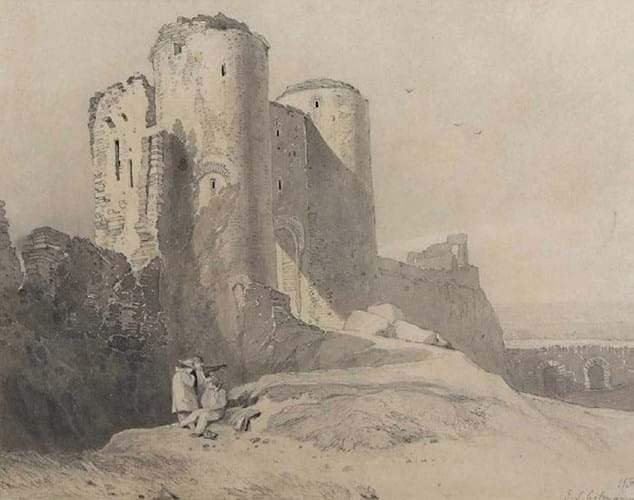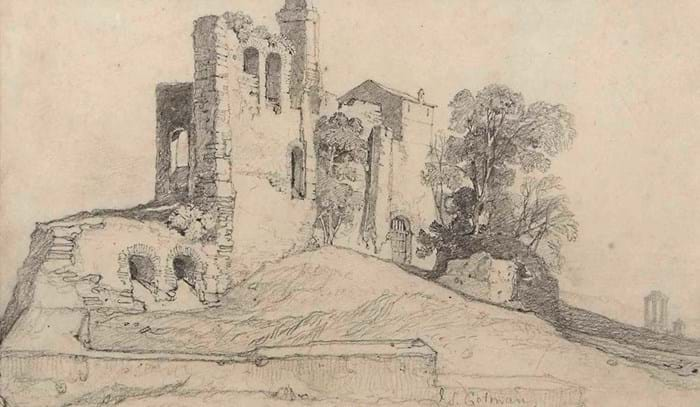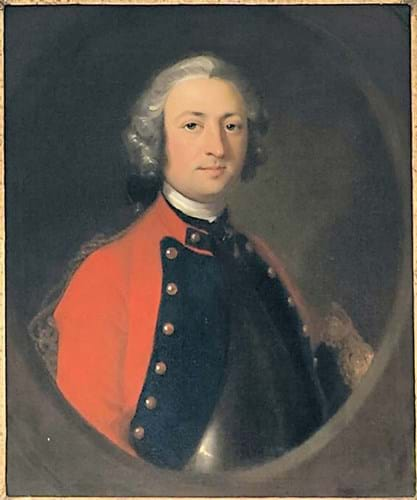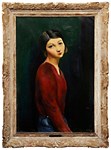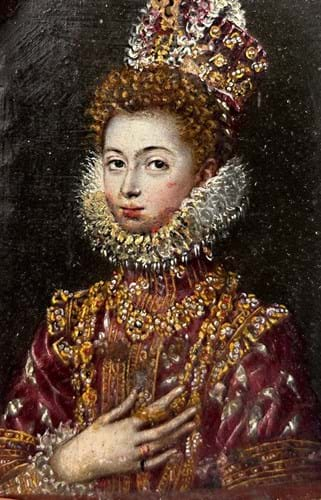
Miniature painting catalogued as ‘early 17th century Spanish school’ that sold for £16,000 at Wimbledon Auctions.
The month of January is traditionally a hiatus in terms of auction action in the UK. However, plenty of picture highlights came at the end of last year with notable works from different periods and a range of contrasting styles emerging. Here is a selection.
Common touch

Miniature painting catalogued as ‘early 17th century Spanish school’ that sold for £16,000 at Wimbledon Auctions.
A miniature portrait of a Spanish princess piqued the interest of bidders at Wimbledon Auctions (22% buyer’s premium) on December 4.
The diminutive painting measured just 3½ x 2½in (9 x 6cm) and came as part of the house contents from a local estate near Wimbledon Common. Remarkably, it had been purchased by the vendor’s parents at a local school jumble sale in the 1970s, probably for no more than a few pounds.
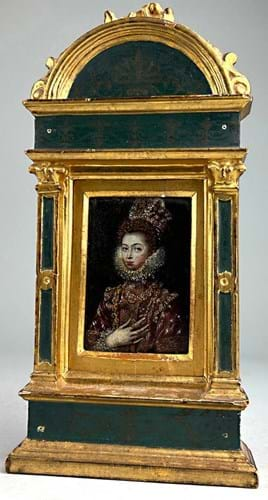
Miniature painting catalogued as ‘early 17th century Spanish school’ that sold for £16,000 at Wimbledon Auctions.
The miniature had been kept behind glass and was removed from its gilt-wood frame for examination ahead of the auction. It was thought to have been painted on either card, pasteboard, vellum or leather and then mounted onto a thin wooden board. The work was described as in ‘overall fair condition’ with some discolouration to the bottom of the sitter’s face and small pin holes at the very top.
The catalogue stated that the sitter was likely to be either Isabella Clara Eugenia (1566-1633), daughter of Phillip II of Spain, or her younger sister Catalina Micaela (1567-97).
Director of Wimbledon Auctions Felix Turner told ATG: “I had the miniature examined by some experts in the trade before the sale and the opinion was 17th century at the latest, but possibly late 16th.
“The attribution to Phillip II’s daughters was something I suggested through my online research. If one searches for the names of the daughters online, the pictures of them are very similar to this portrait.”
On the day, several interested parties clearly felt it was something rather special. Against a £600-800 estimate, two phone lines and a number of internet bidders competed for the lot and it eventually sold at £16,000 to an online bidder via thesaleroom.com.
Cotman creations
Among the notable works on paper consignments in the regions at the end of 2023 was a group of pictures by three members of the Cotman family that were offered at Keys (22% buyer’s premium) in Aylsham, Norfolk.
The sale followed a 205-lot collection of pictures that came to Dawsons in Maidenhead directly from the Cotman descendants in May (see ATG No 2601). Here the works were described in the catalogue as coming from the collection of Dr Henry Lowe and his wife Judy (née Cotman).
At Keys, four lots were by John Sell Cotman (1782-1842) himself – the ‘father’ figure of the dynasty – while two were by his elder son Miles Edmund Cotman (1810-58) and eight by his younger son John Joseph Cotman (1814-78). All bar three sold for a £7560 hammer total.
Two lots stood out: both views of ruins by John Sell Cotman. The Norwich-born landscape painter remains the most prominent artist in the family in terms of curatorial standing and commercial presence. These two examples displayed his considerable talent at observing and capturing historic sites – subjects which were an important part of his oeuvre.
A pencil and watercolour study titled Ruined Castle Gatehouse was pitched at £200-300, an attractive level for a signed work such as this. Measuring 8½ x 11in (22 x 28cm), it drew good competition and was knocked down at £3600.
A signed pencil on paper titled Castle Ruins also drew attention against a £180-250 pitch, selling at £1650.
Ionides ownership
An 18th century English portrait also attracted attention in Bristol a week earlier. The portrait of Major Richard Callis by Richard Wilson (1713-82) appeared at the Auctioneum (19.5% buyer’s premium) saleroom with a modest guide of £2000-4000.
Although much better known as a landscape painter working in Rome, Wilson began his career as a portraitist in London and this 2ft 6in x 2ft 1in (76 x 64cm) oil on canvas was painted in 1741, three years before the artist moved to Italy where he resolved to start anew in both subject matter and patronage.
Nothing is known of the sitter but he is dressed in the uniform of the First or King’s Dragoon Guards, a regiment raised to deal with the insurrection of the Duke of Monmouth in 1685.
The portrait had provenance to Nellie Ionides (1882-1962), the connoisseur collector whose father Sir Marcus Samuel Viscount Bearsted founded the Shell Transport and Trading Company.
It had hung at Ionides’ home, Buxted Park, Sussex, until 2004 when it was acquired by the vendor from a dealer in Bath. At the Bristol auction house on November 17, it attracted a number of bidders before selling online at £24,000.
While portraits are much less common at auction compared to Wilson’s landscapes, and they tend to make less money, the price achieved in Bristol appears to be a highest for this genre apart from a self-portrait that took £32,000 at Sotheby’s in 2017.


